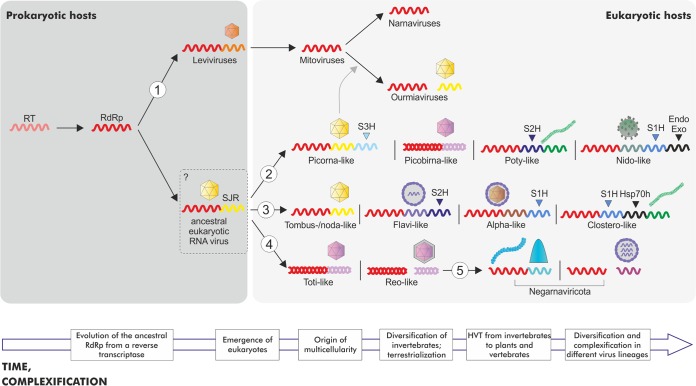FIG 10.
A general scenario of RNA virus evolution. The figure is a rough scheme of the key steps of RNA virus evolution inferred in this work. The main branches from the phylogenetic tree of the RdRps are denoted with the numbers 1 to 5 as described in the Fig. 1 legend. Only the genes corresponding to RdRp, CP, and helicases (S1H, S2H, and S3H for the helicases of superfamilies 1, 2, and 3, respectively) are shown systematically. The helicases appear to have been captured independently and in parallel in 3 branches of +RNA viruses, facilitating the evolution of larger, more complex genomes. Additional genes, namely, the Endo and Exo genes (for endonuclease and exonuclease, respectively) and the Hsp70h gene (heat shock protein 70 homolog), are shown selectively, to emphasize the increased genome complexity, respectively, in Nidovirales and in Closteroviridae. The virion architecture is shown schematically for each included group of viruses. Icosahedral capsids composed of unelated CPs are indicated by different colors (see the text for details). The question mark at the hypothetical ancestral eukaryotic RNA virus indicates the uncertainty with regard to the nature of the host (prokaryotic or eukaryotic) of this ancestral form. The block arrow at the bottom indicates the time flow and the complexification trend in RNA virus evolution.

